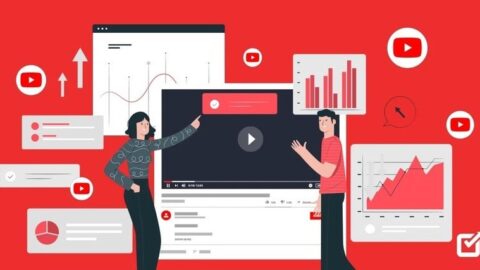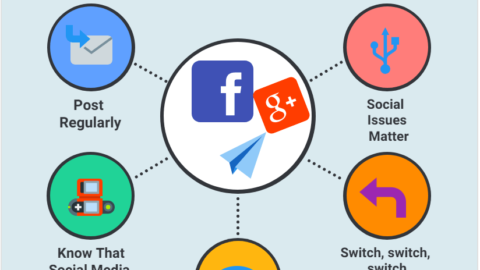Effective Advertising Strategies For Enhancing Brand Awareness In Your Business
Imagine a world without advertising—no catchy jingles, no eye-catching billboards, and no persuasive commercials. Advertising is the lifeblood of businesses, fueling growth, and connecting brands with consumers. But what sets apart the most effective advertising strategies that leave a lasting impact from those that fade into the background? What are the secrets behind effective advertising strategies that captivate our attention, spark our emotions, and drive us to take action?. In this conversation, we talk about some of the strategies to craft messages that resonate with your target audience.
Table of Contents
The importance of advertising cannot be understated as it plays the role of catalyst in shaping the success and growth of a company. Effective advertising helps businesses to reach their target audience, build brand recognition, and establish a strong presence in the market. It allows companies to communicate their unique value propositions, differentiate themselves from competitors, and foster a positive perception among consumers.
These strategies work as powerful tools to connect with the target audience, establish brand recognition, and ultimately drive business growth especially if you are outsourcing your marketing services to the industry specialists.

Effective Advertising Strategies For Enhancing Brand Awareness In Your Business
Let’s dive into some of the proven approaches implemented by media agencies to boost brand awareness through advertising:
Proven Approaches To Boost Brand Awareness
1. Define Your Target Audience for Effective Advertising Strategies
Defining your target audience includes understanding both online and offline audiences. For example, online, you can leverage influencers to reach fashion-conscious millennials on platforms like Instagram and TikTok, whereas for the offline audience, using billboards or eye-catching inflatable advertising, such as giant advertising inflatables, air dancers, arches and tunnels would work effectively. Customized inflatable advertising suggests a one-of-a-kind and captivating method to promote your brand by creating distinctive inflatables for maximum visibility and effectiveness.
Understand your target audience’s demographics, preferences, and behaviors as this knowledge allows you to tailor your advertising efforts to resonate with them effectively. Conduct your market research to gain insights on your audience that will help you make informed decisions.
2. Compelling Content
Content still remains the king in the realm of advertising. Develop a content strategy that includes a mix of informative articles, entertaining videos, captivating visuals, and interactive elements to convey your brand’s message effectively.
Create engaging and relevant content on a regular basis that captivates your audience, and you will see the growth in your consumer base with time. Collaborate with other brands, influencers, and include a clear and compelling call-to-action in your content to prompt your audience to take the desired action.
Whether it’s making a purchase, signing up for a newsletter, or sharing the content, or content to bring traffic to your website, guide your audience towards the next step.
3. Consistent Branding
Consistent branding is a crucial aspect of effective advertising strategies. It involves presenting a unified and cohesive brand image across all marketing channels and touchpoints. From websites to all social media platforms maintain a consistent brand image across and showcase the same in all advertising channels.
Ensure your logo, colors, typography, and messaging align harmoniously to create a cohesive and recognizable brand identity. The uniformity in your designs across all channels will help your brand stand out and get identified.
4. Remarketing Campaigns for Effective Advertising Strategies
Implement remarketing campaigns to target users who have previously interacted with your brand but haven’t converted. This can be done by creating custom audiences based on website visitors, email subscribers, or previous customers. Tailor your ads to remind them of your products or services and encourage them to take action.
Implement remarketing campaigns to target users who have previously interacted with your brand but haven’t converted. Display relevant ads to remind them about your products or services and encourage them to take action. From B2B marketing campaigns, dynamic marketing, cross device marketing, continuously test and refine your remarketing campaigns.
Experiment with different audience segments, ad variations, and strategies to identify what works best for your business. A/B testing can help you uncover insights and optimize your campaigns for better performance. Some other key points are:
- Personalization is a key aspect of remarketing campaigns. Since tailored ads can have a higher impact on users who are already familiar with the brand.
- Frequency capping is important in remarketing to avoid overwhelming users with excessive ad exposure. This could lead to annoyance or ad fatigue.
- Dynamic remarketing takes personalization a step further by showing specific products or services. So that users have previously viewed, creating a more personalized and relevant experience.
- A well-optimized landing page is crucial for remarketing campaigns, ensuring a seamless transition for users who click on the ads.
- Continuous monitoring and analysis of campaign performance is essential to make data-driven optimizations. Such as adjusting ad frequency, refining targeting parameters, or updating creative assets.
5. Social Media Advertising
Leverage the power of social media platforms to reach a vast audience. Craft targeted advertisements on platforms like Facebook, Instagram, LinkedIn, or Twitter to engage with potential customers and increase brand visibility.
Social media platforms frequently update their algorithms and advertising features. Stay informed about the latest trends, changes, and best practices. Continuously test and refine your strategies to stay ahead of the competition and maximize your business growth potential.
6. Offline Effective Advertising Strategies
Explore traditional methods like billboards, signage, or transit ads in high-traffic areas. This form of advertising can create broad exposure and increase brand recognition in the local community.
While the digital landscape has grown significantly, on-ground advertising still holds value and can contribute to business growth especially when combined with a comprehensive marketing strategy that includes digital channels. By combining both online and offline digital marketing efforts for maximum lead generation and reaching a wider audience to maximize your business growth potential.
7. Collaborative Partnerships
Collaborative partnerships in the advertising world can be highly beneficial for businesses. These partnerships involve two or more entities working together to create mutually beneficial advertising campaigns or initiatives. Identify opportunities to collaborate with:
- complementary brands or organizations
- co-branded campaigns,
- joint events, or cross-promotions,
- influencer promotions,
- content collaborations, and
- shared partnerships can expand your reach and introduce your brand to new audiences.
When entering into a collaborative partnership, make sure that you are establishing clear goals, roles, and expectations from the outset. Also, ensure that the partnership aligns with your brand values and objectives.
By working together with like-minded businesses, you can leverage each other’s strengths and resources to create impactful advertising campaigns and drive business growth.
Influencer marketing is a proven method while building brand awareness. When your target audience sees your new products being shared by someone they know and trust, they’re more likely to buy. Before building an effective marketing strategy, it is important to know how much do influencers charge.
8. Analytics and Tracking
Last but not least, your ad analytics that can help you measure and analyze data related to ad reach, engagement, conversions, and return on investment (ROI). From website development to social media caption generator tools to your ad spending, as a business it’s important that you strategize your marketing efforts to be able to generate break even to profitable ROI.
Utilize analytics tools to track the performance of your advertising efforts and measure key metrics such as reach, engagement, and conversions. Analyzing data helps refine your strategies and optimize future campaigns.
Conclusion
In conclusion, effective advertising strategies are essential for businesses seeking growth and success in today’s competitive landscape. By implementing well-planned and targeted advertising campaigns, businesses can reach their desired audience. Also, they can increase brand visibility, and drive customer engagement and conversions.

Adhar Dhaval is experienced portfolio, program and project leader with demonstrated leadership in all phases of sales and service delivery of diverse technology solutions. He is a speaker sharing advice and industry perspective on emerging best practices in project leadership, program management, leadership and strategy. He is working for the Chair Leadership Co.










